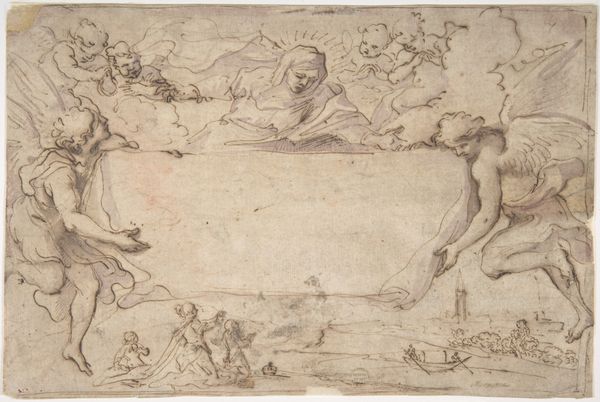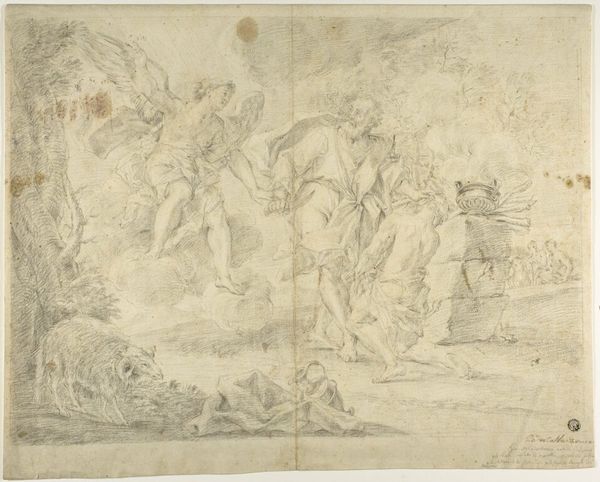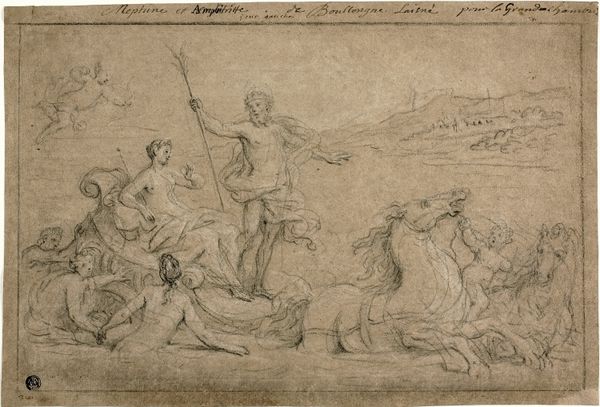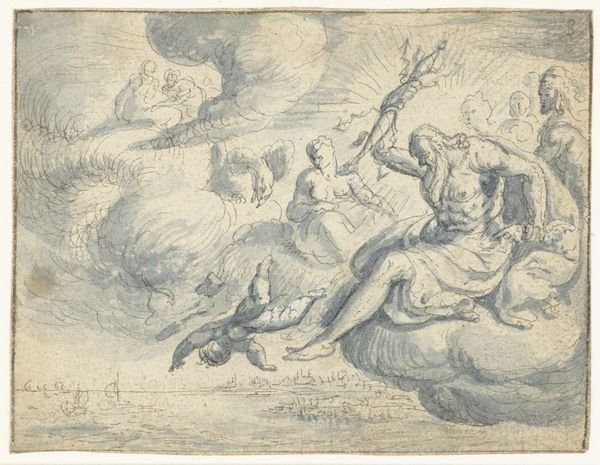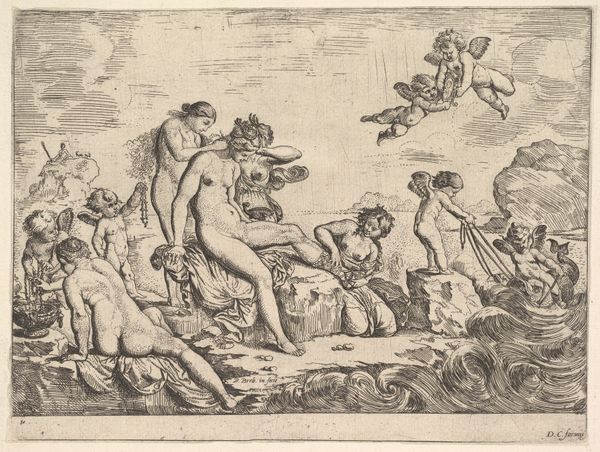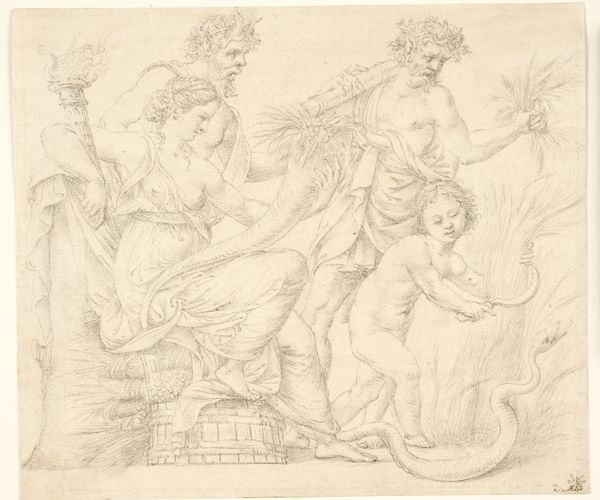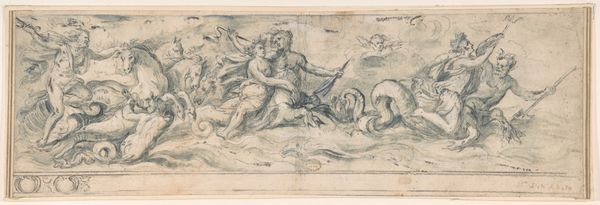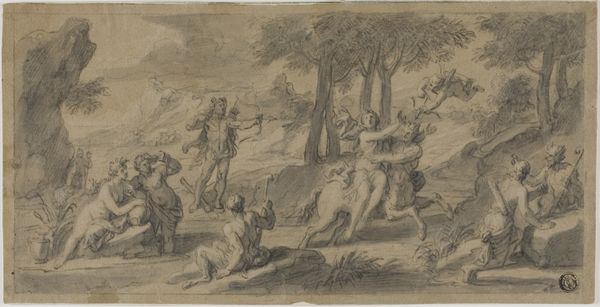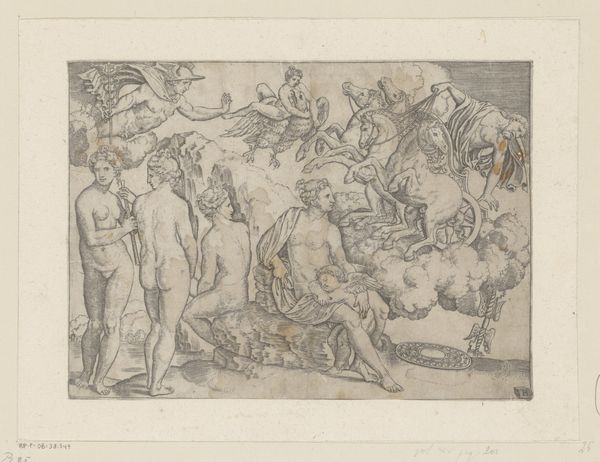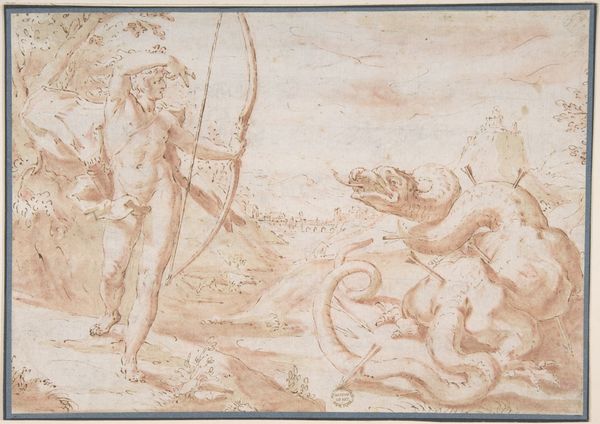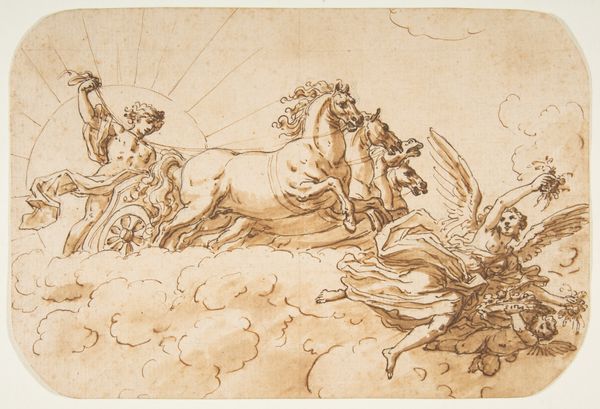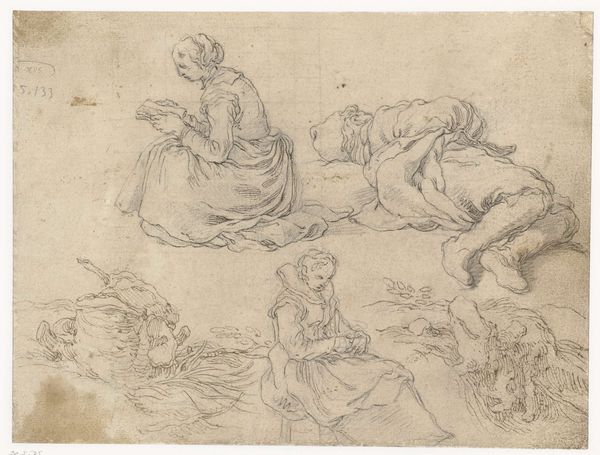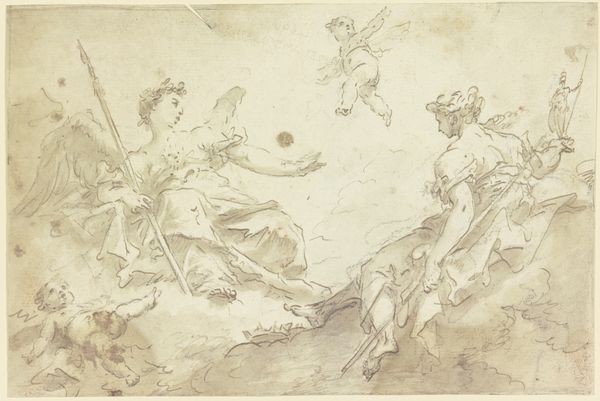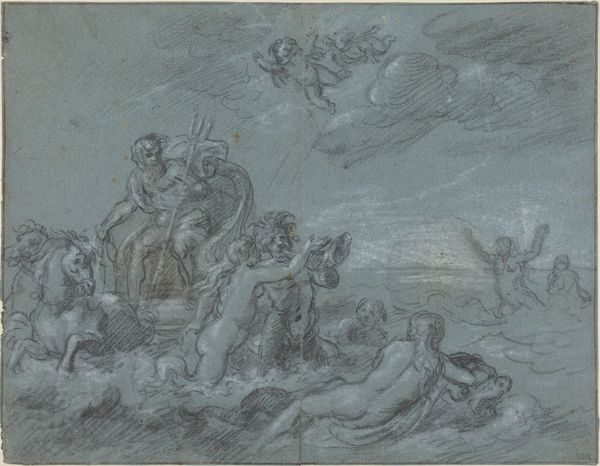
drawing, print, paper, ink, pencil
#
drawing
#
toned paper
#
light pencil work
#
baroque
# print
#
pen sketch
#
pencil sketch
#
landscape
#
figuration
#
paper
#
personal sketchbook
#
ink
#
ink drawing experimentation
#
ancient-mediterranean
#
pen-ink sketch
#
pencil
#
sketchbook drawing
#
pencil work
#
sketchbook art
Dimensions: sheet: 8 1/8 x 10 1/2 in. (20.7 x 26.7 cm)
Copyright: Public Domain
Editor: So this is a 17th-century drawing titled "Fountain with Neptune and Sea Creatures." It’s a sketch, in ink and pencil on toned paper, currently residing here at the Met. I'm immediately struck by the raw energy of the composition, especially the figure of Neptune himself; he's much less idealized than I would have expected. What are your initial thoughts on this piece? Curator: The sketch provides us with a glimpse into the visual culture of the 17th century. Consider, fountains during the Baroque period weren’t simply decorative, they were potent symbols of civic pride and the ruling elite's power to control water, a vital resource. In a society stratified by power, how would this image have been perceived, and who might have consumed it? Editor: That's a great point; I hadn't thought about the social and political implications of something as seemingly benign as a fountain! I guess my view was purely aesthetic. So you're saying this sketch would’ve been more than just art? Curator: Precisely. Its value as an artifact lies in its commentary on how power was projected and consumed. Neptune, a figure from classical mythology, would have immediately communicated wealth, sophistication, and dominion. How does the medium of a sketch affect your perception of that projection? Does it make the statement of authority more, or less, effective? Editor: Hmm, I think the sketch-like quality actually makes it more interesting. It gives a sense of the design process, almost as if we're seeing the birth of a propaganda machine. So this artwork offers not only an artistic creation but also cultural critique? Curator: Indeed. It invites us to investigate how those messages were crafted and consumed, offering a richer understanding of that era. What will you take away from this exploration? Editor: I will remember to consider that art acts not in a vacuum. My readings of any work of art must account for the societal power structures inherent to artistic creation. Thank you!
Comments
No comments
Be the first to comment and join the conversation on the ultimate creative platform.
